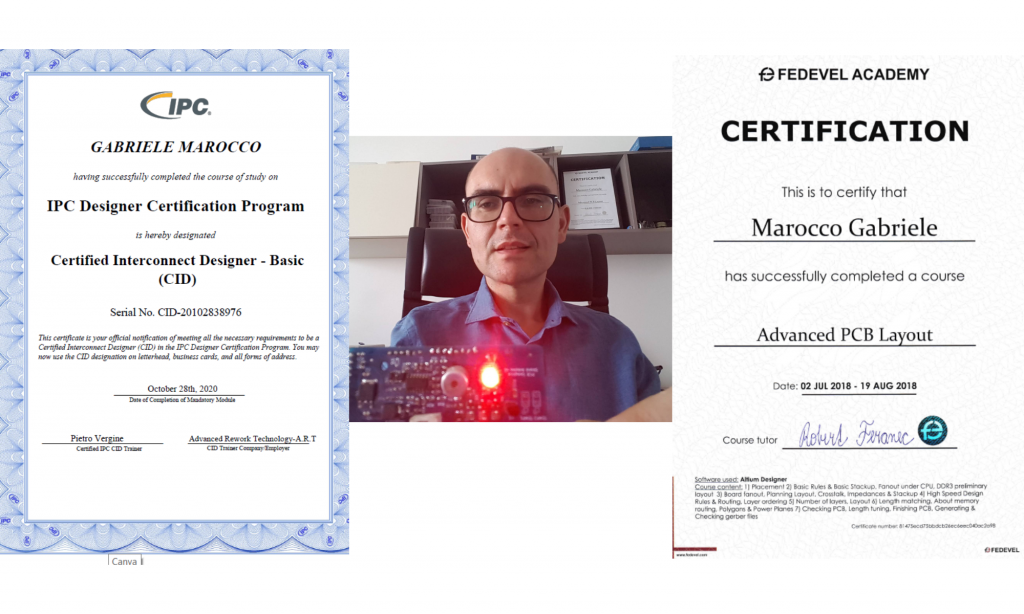 Hardware and PCB Design applying PCB-First method
Hardware and PCB Design applying PCB-First method
Per la versione italiana fai riferimento a questa pagina
In the world of hardware design, the difference between success and failure is often decided before you even turn on the soldering iron. Whether you're a visionary entrepreneur with a revolutionary idea or a private enthusiast wanting to realize your project, the method you choose determines your destiny.
Too many projects fail electromagnetic compatibility tests, causing costly delays, redesigns, and in the worst cases, complete abandonment of the idea. But there's a solution: the PCB-First Method.
⚠️ Traditional Method
- Draw the schematic without protection or filtering
- Route the PCB without considering that traces, vias, and layers are real components
- Test the circuit
- Cross fingers for EMC tests
✨ PCB-First Method
- Think about the final PCB before starting
- Choose "PCB-friendly" components
- Draw the schematic with integrated EMC rules
- Test the circuit
- Face compatibility tests with confidence
Our Tailored Services
🔍 Schematic Review and Integration
I analyze your existing schematic and optimize it according to EMC best practices, ensuring electromagnetic compatibility from the design phase.
🔧 Advanced PCB Design
I create the printed circuit layout by rigorously applying electromagnetic compatibility rules, maximizing success probability. Includes documentation with project files in chosen CAD, Gerber files or ODB++ files, component list (BOM), component coordinate file for automatic assembly, and 3D PCB model.
🎯 Premium Additional Services
- 📦 Sample Supply: Receive pre-assembled and functional prototypes
- 🛡️ EMC Test Accompaniment: I create a technical documentation draft and guide you through compatibility test preparation
Important Notes
I do not design (regarding circuit schematics) high voltage or current devices such as flyback converters, PFC, power inverters.
I do not write structured firmware and FPGA programming. I do not perform enclosure design and do not manage internal component codes.
Let's Get to Know Each Other Better

I'm Gabriele Marocco.
For twelve years I have worked in the electronics sector as a hardware designer. During these years I have worked in various sectors: automotive, professional drones, sensors, development of home automation modules.
In October 2020 I obtained IPC CID (Certified Interconnect Designer) certification. IPC is an organization that regulates the design, production, and soldering aspects of printed circuits.
I have used both professional and free software for printed circuit design. Currently I prefer to design with KiCad but I'm also open to designing with Altium Designer and Cadence (OrCAD).
Today, when I create a printed circuit, I imagine a living organism. The traces are the veins and arteries, the signals are the vital impulse that flows silently but powerfully, and the vias are essential communication points, like nerves that transmit vital information. The components are the organs, each with a unique and indispensable function.